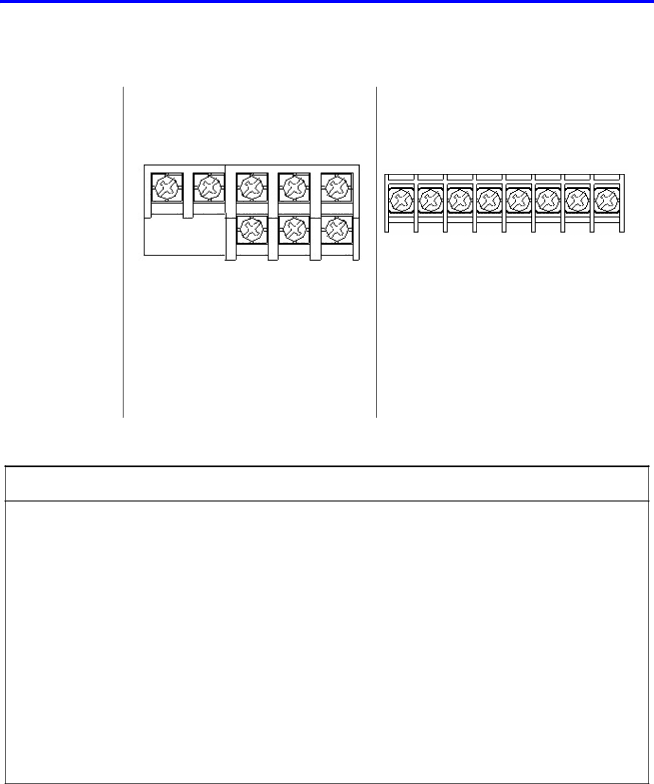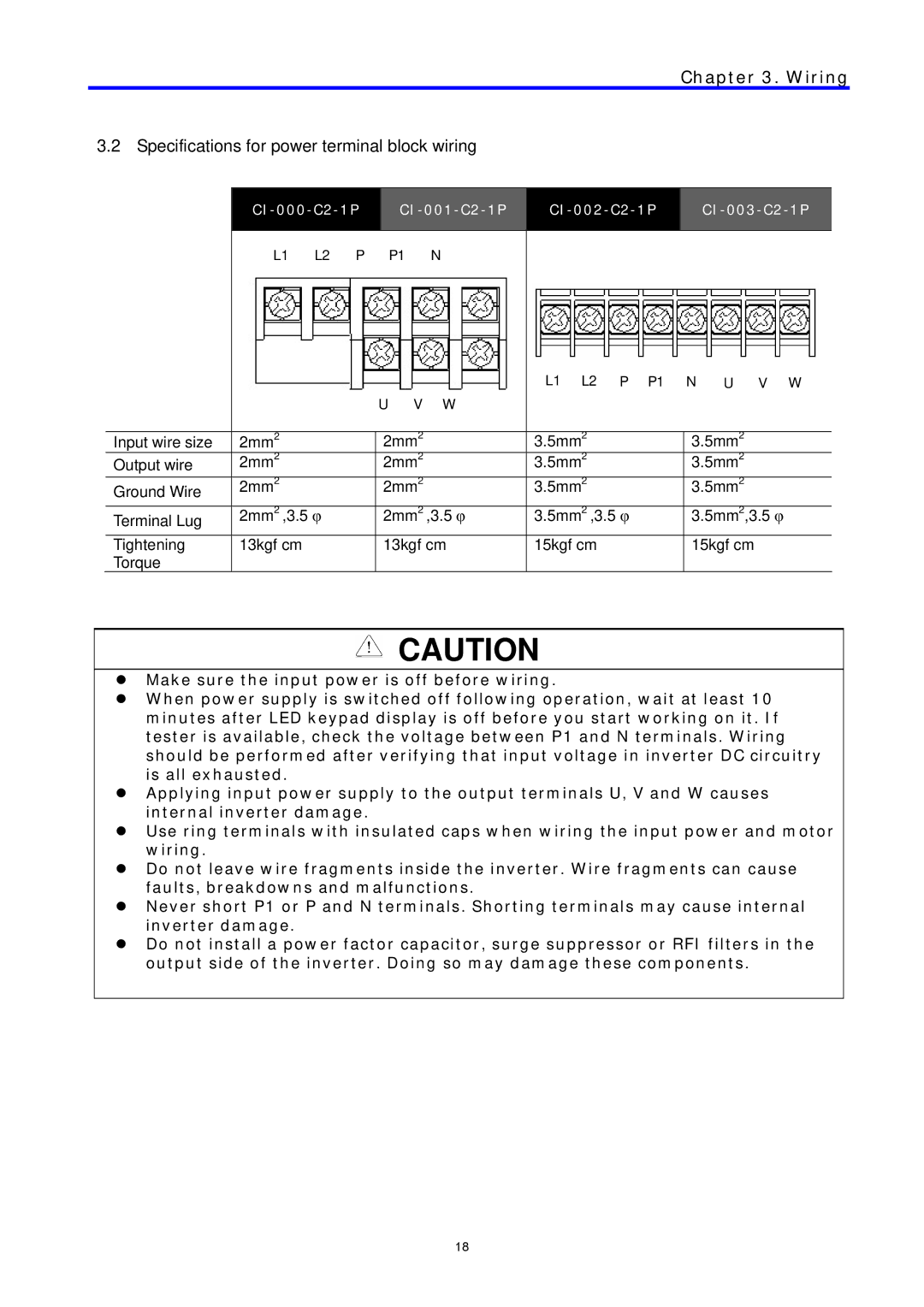
Chapter 3. Wiring
3.2 Specifications for power terminal block wiring
|
|
|
|
L1 L2 P P1 N
|
|
| L1 L2 P P1 | N U V W |
|
| U V W |
|
|
|
|
|
|
|
Input wire size | 2mm2 | 2mm2 | 3.5mm2 | 3.5mm2 |
Output wire | 2mm2 | 2mm2 | 3.5mm2 | 3.5mm2 |
Ground Wire | 2mm2 | 2mm2 | 3.5mm2 | 3.5mm2 |
|
|
|
| |
|
|
|
|
|
Terminal Lug | 2mm2 ,3.5 φ | 2mm2 ,3.5 φ | 3.5mm2 ,3.5 φ | 3.5mm2,3.5 φ |
|
|
|
| |
|
|
|
|
|
Tightening | 13kgf cm | 13kgf cm | 15kgf cm | 15kgf cm |
Torque |
|
|
|
|
![]() CAUTION
CAUTION
zMake sure the input power is off before wiring.
zWhen power supply is switched off following operation, wait at least 10 minutes after LED keypad display is off before you start working on it. If tester is available, check the voltage between P1 and N terminals. Wiring should be performed after verifying that input voltage in inverter DC circuitry is all exhausted.
zApplying input power supply to the output terminals U, V and W causes internal inverter damage.
zUse ring terminals with insulated caps when wiring the input power and motor wiring.
zDo not leave wire fragments inside the inverter. Wire fragments can cause faults, breakdowns and malfunctions.
zNever short P1 or P and N terminals. Shorting terminals may cause internal inverter damage.
zDo not install a power factor capacitor, surge suppressor or RFI filters in the output side of the inverter. Doing so may damage these components.
18
